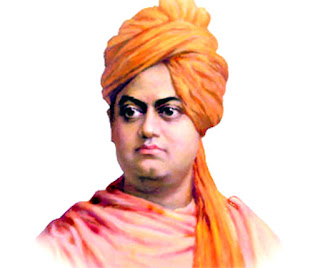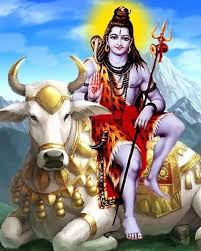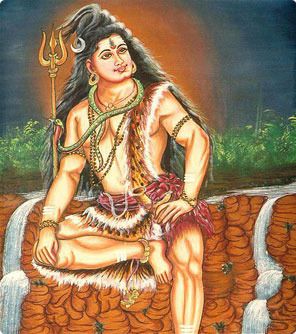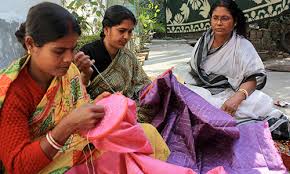Lord
Shiva took many avatars in various yugas for sustaining law and balance of
nature. In Shiva Purana, the following 19 Avatars of Shiva are mentioned.
Adi
Shankaracharya said,
“Forgive me Oh, Shiva! My three great sins! I came on a pilgrimage to Kashi
forgetting that, you are omnipresent. In thinking about you, I forgot that You
are beyond thought. In praying to you, I forgot that You are beyond words.”
1. Piplaad Avatar
Lord Shiva took birth in the house of Rishi Dadhichi as
Piplaad. But the sage is said to have left the house due to the positioning of
the Shani. So, Piplaad cursed Shani and caused the planet to fall from its
celestial abode. Later, he forgave Shani on a condition that the planet would
never trouble anyone before 16 years of age. Hence, worshipping the Piplaad
form of Lord Shiva helps to get rid of Shani dosha.
2. Nandi Avatar
Nandi or the great bull is the mouth of Lord Shiva.
Lord Shiva is worshipped in the form of Nandi in many parts of India. The Nandi
avatar of Lord Shiva is seen as the protector of the herds. He is depicted as
bull faced with four hands. The two hands are seen holding an axe and an
antelope while the other two are joined.
3. Veerabhadra Avatar
Veerabhadra came to be after Goddess Sati immolated herself at the Daksha
yagna. Lord Shiva became extremely furious. Lord Shiva plucked a hair strand
from his head and threw it on the ground. It was from the hair strand
that Veerbhadra and Rudrakali were born. This
fierce avatar is said to have broken the sacrificial vessels, polluted the
offerings, insulted the priests, and finally cut off Daksha’s head, trampled on
Indra, broke the staff of Yama, scattered the gods on every side; then he
returned to Kailash.
4.
Bhairava Avatar
Bhairava
avatar was created when Lord Brahma lied
about his quest for superiority, Shiva took the form of Bhairava and cut off
Lord Brahma’s fifth head. Severing a Brahma’s head made Lord Shiva guilty of
the crime of killing a Brahmin (Brahma hatya) and hence Shiva had to carry the
skull of Brahma for twelve years and roam as a Bhikshatana. In this form, Shiva
is said to guard all the Shakti Peethas.
5.
Ashwatthama
When Lord Shiva consumed
the deadly poison during the churning of the ocean, the poison started burning
his throat. The 'vish purush', personification sprang out of Lord Shiva and the
Lord blessed him with a boon. Lord Shiva granted him the boon that the vish
purush would be born on earth as the son of Drona and would kill all the
oppressive Kshatriyas. Thus the vish purush was born as Ashwatthama.
6.
Sharabha Avatar
Shiva Purana narrates that god Shiva assumed the Avatar of Sharabha (part bird part
lion) to tame Narasimha –
the fierce man-lion avatar of Vishnu. This form is popularly known as
Sarabeshwara (Lord Sarabha) or Sharabeshwaramurti.
7.
Grihapati Avatar
Lord
Shiva was born to a great devotee of Lord Shiva, Shuchismati was his devoted
wife who yearned to birth a child, like Shiva. The child was well versed in all
the Vedas yet was informed had to die young due to planetary positions. His
journey to Kashi was dampened by Indra but Lord Shiva came to his defense and
Lord Shiva blessed Grihapati by saying “even Kaalvajra would not be able to
kill you.” Grihapati became
very pleased. The Shivalinga which he worshipped, later on, became famous as
‘Agnishwar linga’. Lord Shiva made Grihapati
the lord of all the directions.
8.
Durvasa Avatar
Lord
Shiva had taken the avatar of Durvasa on
the earth to maintain the discipline of the universe. Durvasa was a great sage
known for his short temper.
9.
Lord Hanuman
Lord Shiva was so infatuated by the appearance of Lord Vishnu in his form of Mohini during Samudra Manthan that
his semen was released on the ground. This semen was established by the
Saptarishis in the womb of Anjani, with the permission of Lord Shiva himself.
In this way was born the mighty Hanuman.
The great monkey God is also one of the avatars of Lord Shiva. It
is said that Lord Shiva took birth in the form of Hanuman to serve Lord Vishnu
incarnated in the form of Ram. Until this day, he is known as the biggest
disciple of Lord Ram.
10. Vrishabha Avatar
During Samundra
Manthan Vishnu tricked all the asuras by creating an illusion of
enchanting beauties. When the asuras saw them, they forcibly carried these
enchanting beauties to their abode – Patal Lok. After that, they again returned
to take control of the Nectar which had been taken by the gods. While Vishnu
went to annihilate them in Patal loka he himself got caught up and infatuated
by a beautiful women “Maya” and fathered many immoral sons there who created a
ruckus for the Gods. It was then Lord Shiva took the form of an ox or Vrishabha and
killed all the cruel sons of Lord Vishnu. Lord Vishnu came to fight the ox but
after recognizing that it was Lord Shiva’s incarnation, he left the fight and
returned to his abode.
11. Yatinath Avatar
Yatinath
Avatar – There was once a tribal man named Aahuk. He and his wife were
ardent devotees of Lord Shiva. One day Lord Shiva visited them in the form of
Yatinath. Their small hut couldn’t accommodate lord Shiva guised as a guest, so
Aahuk decided to sleep outside. Unfortunately, he was killed by a wild animal
outside. In the morning,
finding Aahuk dead, his wife decided to kill herself. Then Lord Shiva appeared
in his real form and blessed her with a boon that she and her husband will be reborn
as Nala and Damayanti and Lord Shiva would unite them.
12. Krishna Darshan avatar
Lord Shiva took this incarnation to
highlight the importance of yagna and rituals in a person's life. As per the
story, there was a king named Nabhag, who had left his home for education in a
Gurukul during the childhood. Meanwhile in his absence, his brothers
distributed the entire wealth among themselves thus leaving him out of the
distribution. As Nabhag returned and came to know about it, he approached the
sage Angiras. The sage was trying to perform a Yajna, but was not able to.
Nabhag helped him accomplish the Yajna, pleased by which, he gave him the
wealth left after performing the Yajna. It was at this point that Krishna
Darshan Avatar of Lord Shiva appeared and prevented sage Angiras from donating
the wealth. He showed Nabhag the significance of higher spiritual attainment
and salvation and hence gave the blessings.
13.
Bhikshuvarya Avatar
This incarnation of Lord
Shiva protects human beings from all kinds of dangers. Once a beggar was
passing by a child who had just then taken birth near the banks of a pond and
where his mother had died. While the newborn was crying, the beggar woman
hesitated to take the baby in her lap. Lord Shiva then appeared as another beggar
and advised the beggar woman to take the child and bring him up.
14.
Sureshwar Avatar
Lord Shiva once took the form of Indra to
test one of his devotees. That is why he came to be known as Sureshwar. Once a
child Upamanyu, the son of sage Vyaghrapad meditated to please Lord Shiva. Lord
Shiva, with an intention to test his devotion, appeared there along with
Goddess Parvati, both disguised as Indra and Indrani, respectively. They not
only attempted to instigate him against Lord Shiva but also promised to bless
him and fulfil all his blessings. However, this could not lure the boy and his
devotion for Lord Shiva proved to be true. Pleased by this, both the deities
revealed their original identity and blessed the child. This form of Lord Shiva
was then known as Sureshwar.
15. Kirateshwar Avatar
Lord Shiva descended in the
form of a hunter or Keerat while Arjuna was meditating. Duryodhan had sent a
demon named Mooka to kill Arjuna. Mooka had disguised himself as a boar. Arjuna
was engrossed in his meditation, when suddenly his concentration got disturbed
by a loud noise. He opened his eyes and saw Mooka. He and the Keerat struck the
boar at the same time with arrows. A fight broke between the Keerat and Arjuna
as to who struck the boar first. Arjuna challenged Lord Shiva in the form of
Keerat for a duel. Lord Shiva was pleased by Arjuna's valour and gifted him his
Pashupata.
16. Suntantarka Avatar
Lord Shiva took this
incarnation to ask the hand of Goddess Parvati in marriage from her father
Himalaya.
17. Brahmachari AvatarLord Shiva took this avatar to test
Goddess Parvati's love for him. After sacrificing herself in the fire of Yajna,
Sati was born again as Parvati, the daughter of the Himalayas. As Parvati, she
wanted to marry Lord Shiva. It was as Brahmachari that Lord Shiva had tested
her determination to marry him.
18. Yaksheshwar Avatar
To remove ego and self-pride from the minds of many gods, Lord Shiva
took this form. This avatar shows that whoever may be, they should not act in a
wrongful manner and should show kindness among others.
During the time when ocean was being churned first of all poison
appeared from it. The deities were very terrified to see the tremendous heat it
generated. They went to lord Shiva and requested to protect them from the heat
of that poison. Lord Shiva drank all the poison but did not let it pass down
his throat.
After the poison, Nectar appeared from the ocean, which was drunk by the
deities. The demons too wanted to drink the nectar, so a tremendous battle
ensued between them and the deities. The deities became victorious in this
battle because they had become immortal due to the effect of the Nectar. This
victory made the deities very arrogant.
Lord Shiva was very concerned about their arrogant nature. He went to
them in the guise of a Yaksha. He asked as to what was it that had made them so
arrogant. The deities replied that their arrogance stemmed from victory over
the demons. Lord Shiva who was disguised as Yaksha replied- “Your pride is
based on false notion, because you did not achieve victory due to somebody’s
grace and blessing.”
The deities disagreed with him. Lord Shiva then asked them to cut the
grass if they considered themselves so mighty. He then kept a grass leaf in
front of them. Each of the deities tried to cut that grass with their
respective weapons but remained unsuccessful in their attempts. They were all
amazed. Suddenly a heavenly voice was heard which said that the Yaksha was none
other than Lord Shiva himself. The deities realized their mistakes. They
apologized to lord Shiva. After vanquishing the false pride of the deities lord
Shiva disappeared. This form of Lord Shiva then came to be known as Yaksheshwar.
19. Avadhut Avatar
This incarnation was
taken by Lord Shiva to crush the arrogance of Lord Indra.
Devotee
KABIGURU SEVA MISSION
Seva Volunteers






































